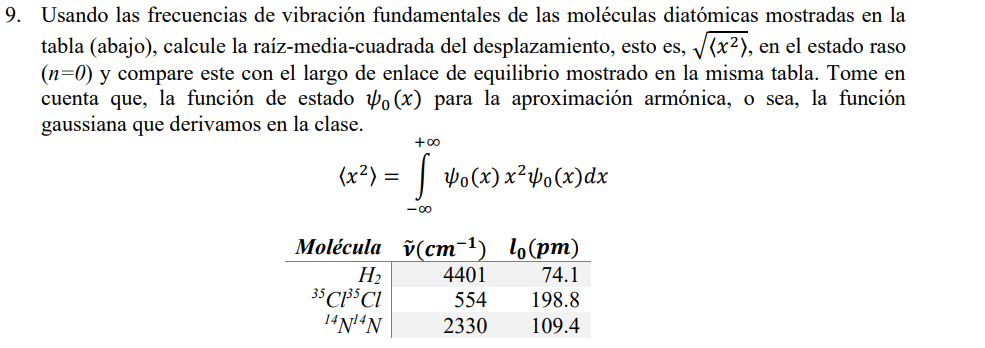¡Tu solución está lista!
Nuestra ayuda de expertos desglosó tu problema en una solución confiable y fácil de entender.
Mira la respuestaMira la respuesta done loadingPregunta: Using the fundamental vibrational frequencies of diatomic molecules shown in the table (below), find the root-mean-square of the displacement, that is, √〈𝑥2〉, in the flat state (n=0) and compare this with the
Using the fundamental vibrational frequencies of diatomic molecules shown in the
table (below), find the root-mean-square of the displacement, that is, √〈𝑥2〉, in the flat state
(n=0) and compare this with the equilibrium link length shown in the same table. take in
Note that the state function 𝜓0(𝑥) for the harmonic approximation, that is, the function
Gaussian that we derive in the class.- Hay 2 pasos para resolver este problema.Solución
Texto de la transcripción de la imagen:
Usando las frecuencias de vibración fundamentales de las moléculas diatómicas mostradas en la tabla (abajo), calcule la raíz-media-cuadrada del desplazamiento, esto es, ⟨x2⟩, en el estado raso (n=0) y compare este con el largo de enlace de equilibrio mostrado en la misma tabla. Tome en cuenta que, la función de estado ψ0(x) para la aproximación armónica, o sea, la función gaussiana que derivamos en la clase. ⟨x2⟩=∫−∞+∞ψ0(x)x2ψ0(x)dx

Estudia mejor, ¡ahora en español!
Entiende todos los problemas con explicaciones al instante y pasos fáciles de aprender de la mano de expertos reales.

